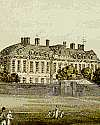
On 7 Jun 1753, the British Museum was founded, the world's oldest public national museum. King George II gave his royal assent to an Act of Parliament to accept the collection of Sir Hans Sloane, a London-based physician, following his death. In his will, Sloane had offered the British nation the collection he built over his lifetime: 71,000 objects, mostly plant and animal specimens.
More of its history can be read in an extract from A General Guide to the British Museum (1898).

On 7 Jun 1928, Bernard F. Burke was born, the American astronomer who in 1955 discovered that the giant planet Jupiter emits radio waves - the first to be found from a planet in our solar system. Today's book pick is: The Invisible Universe: The Story of Radio Astronomy, by Gerrit Verschuur, who tells the story of radio astronomy for a lay audience, of how radio waves are generated by stars, supernova, quasars, colliding galaxies, and by the very beginnings of the universe itself. You learn what astronomers are doing with those huge dishes, collecting and analyzing their data - "listening" to the radio signals from space, in order to learn what is out there.
It is available from Amazon, typically about New from $22.00. Used from $9.57. (As of earlier time of writing - subject to change.)
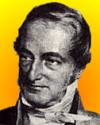 | Your admission of the late appearance of the great intellectual crown of the whole animal race [man] strikes me as perfectly fatal to the analogy of your system of a continually recurring series of identical terms. |
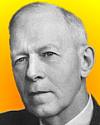 | I would like to emphasize strongly my belief that the era of computing chemists, when hundreds if not thousands of chemists will go to the computing machine instead of the laboratory for increasingly many facets of chemical information, is already at hand. There is only one obstacle, namely that someone must pay for the computing time. |
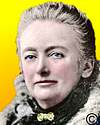 | It has been aptly said that all Egypt is but the façade of an immense sepulchre. |
| Before you look at today's web page, see if you can answer some of these questions about the events that happened on this day. Some of the names are very familiar. Others will likely stump you. Tickle your curiosity with these questions, then check your answers on today's web page. | |
| Births | |
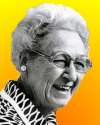 | Virginia Apgar, born 7 Jun 1909 was an American physician, anesthesiologist, and medical researcher who developed the Apgar Score System. What is the Apgar Score System used for? |
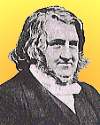 | Sir James Young Simpson, born 7 Jun 1811 was a Scottish inventor and obstetrician who was the the father of modern anesthetics. He employed ether for the first time in Britain. A different substance he used was as the first time that anesthetic was used in an operation (1847). Simpson was a natural inventor, always eager to experiment in new directions - the fight against puerperal fever, the invention of new types of forceps and the combating of cholera. Which anesthetic was it that he used for the first time in an operation? |
| Deaths | |
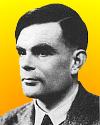 | Alan M. Turing (1912-1954) was an English mathematician and logician who pioneered in the field of computer theory and who contributed important logical analyses of computer processes. He made major contributions to mathematics, cryptanalysis, logic, philosophy, and biology and created a new area of computer science. Can you name the new area of computer science he contributed to? |
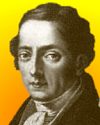 | A German physicist (1787-1826) who first studied the dark lines of the Sun's spectrum, was also the first to use extensively the diffraction grating, a device that dispenses light in much the same way a prism does. His work set the stage for the development of spectroscopy. Can you name this scientist? |
| Events | |
 | On 7 Jun 1980, the first power plant of this type was dedicated. It was sited at the Natural Bridge National Monument, Utah. Its 100-kilowatt output could provide the power needs for the buildings and facilities of that National Park. The nearest alternate power line was 38 miles away. The National Park System was part of the joint venture with MIT's Lincoln Laboratory and the Dept. of Energy. What type of power plant was this? |
 | On 7 Jun of a certain year, Thomas S. Hall of Stamford, Conn., received a patent for the first automatic electric block railroad signal system in the U.S. When a train entered a block of track, Hall's electromagnetic device automatically set a signal when the locomotive struck a lever fastened to the rail. The signal was set to danger until the train cleared the block. In what decade was this patent issued? |
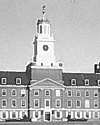 | On 7 Jun of a certain year, the first U.S. laboratory exclusively built for studies in microbiology was dedicated in New Brunswick, N.J., as part of Rutgers University. In what decade did this dedication take place? |
Fast answers for the previous newsletter for June 6: buckminsterfullerene, buckyball, a fullerene • fruits and seeds • Sigmund Freud • the decade including the year 1882 • nylon.
 If you enjoy this newsletter, the website, or wish to offer encouragement or ideas, please send feedback by using your mail reader Reply button.
If you enjoy this newsletter, the website, or wish to offer encouragement or ideas, please send feedback by using your mail reader Reply button. Your click on a Facebook, StumbleUpon, or other social button on the site webpages is also a welcome sign of appreciation. Thank you for using them.
© This newsletter is copyright 2020 by todayinsci.com. Please respect the Webmaster's wishes and do not put copies online of the Newsletter — or any Today in Science History webpage. (If you already have done so, please remove them. Thank you.) Offline use in education is encouraged such as a printout on a bulletin board, or projected for classroom viewing. Online, descriptive links to our pages are welcomed, as these will provide a reader with the most recent revisions, additions and/or corrections of a webpage. For any other copyright questions, please contact the Webmaster by using your mail reader Reply button.
--
If you do not want to receive any more newsletters, Unsubscribe
To update your preferences and to unsubscribe visit this link
Executive Real Estate Business Class
-
"It was like a man with wings. It wasn't like anything you'd see on TV or in a monster movie." ...
About the publisher
Search This Blog
Blog Archive
-
▼
2020
(1542)
-
▼
June
(193)
- TRAVEL: Epic America—Our photographers' picks
- On This Day for June 30 - Night of the Long Knives...
- Newsletter for Tuesday 30 June.
- We told you: Mass-Tracking COVI-PASS Immunity Pass...
- June 30: Theory of Evolution, the Night of Long Kn...
- HISTORY: And the symbols come tumbling down
- Explore the Ocean with Nat Geo Kids Magazine
- New This Week on History News Network
- On This Day for June 29 - London's Globe Theatre d...
- Newsletter for Monday 29 June.
- COVID Cartoon Night (not funny) while we weep for ...
- June 29: Shakespeare's Globe Theatre Burns Down an...
- FAMILY: Getting your kid to help others
- Henry VIII's surprising burial place | The world's...
- On This Day for June 28 - Assassination of Archduk...
- Say the wrong thing: lose visitation with your kid...
- Newsletter for Sunday 28 June.
- June 28: Franz Ferdinand Assassinated, the Treaty ...
- The Compass: Kenya
- How the Invention of A/C Changed US Politics
- On This Day for June 27 - Yen made official moneta...
- Newsletter for Saturday 27 June.
- June 27: 1st Women's Magazine, Nuclear Power Stati...
- CORONAVIRUS SPECIAL EDITION: The virus hasn't won ...
- PHOTOGRAPHY: A legendary photographer's enduring r...
- Partner: How to keep your kids learning vocab this...
- Archaeologists Say They've Just Solved The 400-Yea...
- The Roundup Top Ten From History News Network
- On This Day for June 26 - Opening of CN Tower, Bab...
- Newsletter for Friday 26 June.
- Contact Tracer warns of forced vaccinations plus R...
- June 26: Reconnaissance balloons, Kennedy's Clario...
- YOUR WEEKLY ESCAPE: A dangerous quest for hallucin...
- That Was No Bunny: Watch New Episode of Alone Tonight
- ANIMALS: Leave that elephant alone
- On This Day for June 25 - Korean War begun, Antoni...
- Newsletter for Thursday 25 June.
- June 25: 1st Female PhD, Custer's Last Stand, the ...
- SCIENCE: The heat wave in the Arctic
- Demystified: What Does "SPF" Mean?
- On This Day for June 24 - Russia invaded by Napole...
- Breaking News from History News Network
- Newsletter for Wednesday 24 June.
- June 24: Fatal Medieval Dance Manias, the Gadsden ...
- TRAVEL: Fear of flying and hotel rooms fuels RV boom
- Be at the Front Lines of History's Most Epic Battl...
- On This Day for June 23 - Battle of Bannockburn, C...
- Lowest US coronavirus deaths reported since March ...
- Newsletter for Tuesday 23 June.
- June 23: World's Oldest Parliament, the Contracept...
- Life Under The Shah: What Iran Looked Like Before ...
- HISTORY: A swift goodbye to some racist imagery (a...
- A whole year of Britannica Premium for $49.99?
- New This Week on History News Network
- On This Day for June 22 - Mutiny against Henry Hud...
- Newsletter for Monday 22 June.
- Clintons and Gates Connected at the Hip plus Cardi...
- June 22: Galileo Galilei Recants, Last Shot of the...
- FAMILY: How to keep kids safe as places reopen
- On This Day for June 21 - Japanese defenses destro...
- Newsletter for Sunday 21 June.
- June 21: 1st Governor General of India, Fermat's L...
- The Compass: Ecuador
- On This Day for June 20 - Casket Letters found, Ho...
- Newsletter for Saturday 20 June.
- CORONAVIRUS SPECIAL EDITION: Could public bathroom...
- Mandatory Vaccines coming: Bill Gates Accuses Tho...
- June 20: Attila the Hun, the University of Oxford ...
- PHOTOGRAPHY: Fatherhood 2020 — ‘Fear and courage a...
- Why is America haunted by its past?
- The Woman Who Claimed Emmett Till Wolf-Whistled At...
- This Week's Roundup Top Ten from History News Network
- Exclusive HistoryExtra podcasts | Listen now
- On This Day for June 19 - Rosenbergs executed for ...
- Newsletter for Friday 19 June.
- World Economic Forum starts The Great Reset initia...
- YOUR WEEKLY ESCAPE: How the ultimate shark photo w...
- June 19: London's Metropolitan Police and the 1st ...
- Predator Encounters. Watch New Episode of Alone To...
- ANIMALS: Finding the snow leopards
- Count on a Source You Can Trust
- On This Day for June 18 - War of 1812 begun, Sir P...
- Newsletter for Thursday 18 June.
- Lockdowns, tracing, testing, vaccinating, and Libe...
- June 18: US-British War of 1812, the Battle of Wat...
- SCIENCE: They grew fearsome. They began soft, and ...
- Demystified: How Are Sports Chosen for the Olympics?
- Breaking News from History News Network
- On This Day for June 17 - Arrest of O.J. Simpson, ...
- Newsletter for Wednesday 17 June.
- June 17: Mumtaz Mahal, the French Revolution and G...
- TRAVEL: They hurtled the world's highest point
- Explore together with Nat Geo Kids magazine
- On This Day for June 16 - First woman in space, Jo...
- Newsletter for Tuesday 16 June.
- June 16: Salvation Army Forms, Bloomsday and FDR's...
- HISTORY: Why we can’t shake COVID-19
- New This Week on History News Network
- On This Day for June 15 - Magna Carta sealed by Ki...
- Yes, they really are forcing changes to your world...
-
▼
June
(193)
-
Blogroll
-
About
HistoryFact










0 comments:
Post a Comment